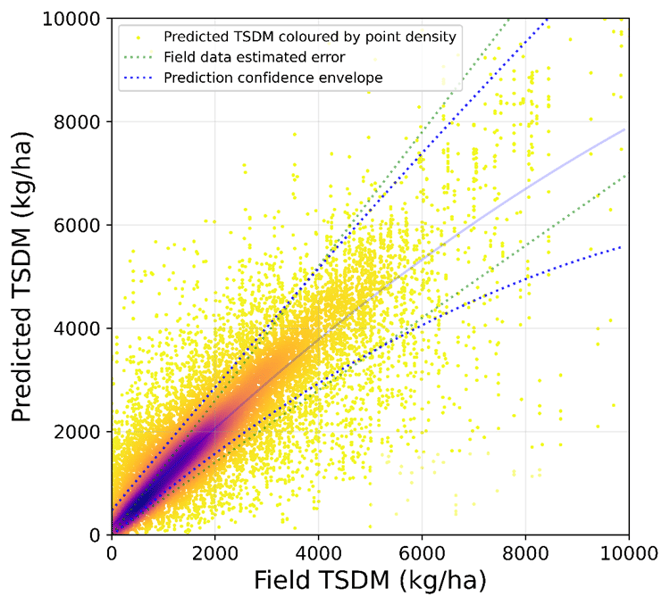Cibo Labs Pasture Biomass Model Update October 2024
On October 25th 2024 we implemented a major update to the Cibo Labs the Australian Feedbase Monitor(AFM).
Please note: this Pasture Biomass Model Update has also been deployed to our PastureKey subscription service, and was deployed 8 months later in April 2025.
Since our last release in April 2023, we have been actively collaborating with our clients and partners to improve our Total Standing Dry Matter (TSDM) predictions. This effort involved the collection of an additional 1100 calibration sites across Australia, particularly in areas where our model's performance had been lacking. The primary challenge stemmed from a lack of data on pasture systems that are influenced by mulga and similar plant types. We identified several key areas for enhancement, including:
- Enhanced mapping of woody vegetation across Australia to accurately reflect changes resulting from fires, droughts, and natural regrowth processes.
- Increased data collection efforts in the Northern Rangelands of Australia, as well as a broader gathering of information across Eastern Australia.
- Pasture under mulga and brigalow systems in northern Australia.
The most significant challenge was collecting data to predict senesced high-biomass temperate pastures in Western Australia where vast areas had spring, summer and autumn growth accumulated across many under-stocked farms.
Throughout 2023 and 2024, the Cibo Labs team and many collaborators collected over 1100 additional sites to capture the biomass and phenology of these pasture systems which often exceeded 9,500kg/ha.
 |
 |
Figure 1. Comparison between additional 1300 field calibration and validation sites collected during 2023 and 2024 (left image) to the previous model (right image).
The model was developed using data from 6,200 field sites, with a random sampling approach that allocated 60% of the data for model development, 30% for internal validation, and the remaining 10% for testing the model's accuracy. Variations in the results, known as outliers, can arise from several factors, including suboptimal model performance, rapid pasture growth following rainfall close to the sampling dates, or changes in pasture utilization after the field samples were taken. Notably, the overall Mean Absolute Percentage Error (MAPE) of the field data is 40%. While the pasture cuts demonstrated the lowest MAPE, they also exhibited significant variability, with a MAPE of approximately 30%.

The Median Absolute Error (MAE) of the model increases when a larger range of TSDM observations is considered. When TSDM values of up to 2000 kg/ha are considered MAE is 113 kg/ha and the MAPE is 13.2%. Importantly, the model error matches the error in the field data up to 2000kg/ha.
The “living model” approach to the national biomass prediction service is now well established within operational systems. Our ability to reliably estimate pasture biomass is only as good as the data collected to train the models and our ability to adequately represent the pasture types and conditions important to grazing management decisions. This has been extremely challenging to achieve with highly variable seasonal weather and pasture conditions since development began in 2018.
We continue to work closely with individual producers to identify regions, pasture types and seasonal conditions where model performance needs to be improved and to coordinate data collection. The freely available Biomass Collector App provides a capability for nationally consistent data to be easily collected and fully utilised by the industry and research organisations.
![PNG Transparent background-1.png]](https://support.cibolabs.com.au/hs-fs/hubfs/PNG%20Transparent%20background-1.png?width=215&height=76&name=PNG%20Transparent%20background-1.png)